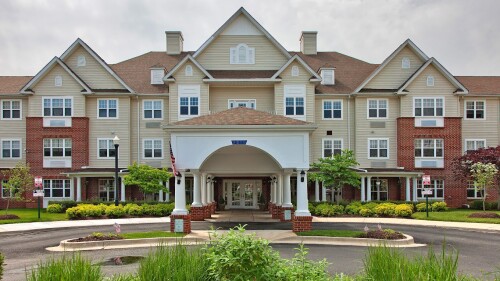Thanks to the persistence and hard work of ULI members in Nashville, the capital of Tennessee has one of the most successful home retrofitting campaigns in the country.
Of greater importance, the Go Green Nashville initiative is further proof that ULI can make a real, tangible impact on the lives of everyday citizens, says Ed Owens, chairman of ULI Nashville and director of waterfront development for the Metropolitan Development and Housing Agency. “We aren’t dealing in obscure theories or principles of development, but something that has a real dollars-and-cents impact on people’s lives,” he says. “ULI has helped them save money, and that’s something for which they will remember the organization.”
Go Green Nashville started as a small pilot initiative by the ULI Nashville Sustainability Committee, targeting an urban neighborhood within the city, and has now taken off. “The program has mushroomed to other districts in Nashville and has become incredibly popular,” says Owens. “The response from homeowners is nothing short of phenomenal.”
The main lesson from Go Green Nashville is that people will listen and act when they get information from a trusted source such as ULI, says Luke Gebhard, energy efficiency program director, Mayor’s Office of Environment and Sustainability. “Homeowners will be more likely to conserve energy and follow through on energy-saving home improvements when they know their friends and neighbors are also participating,” he continues. “The key to its success is its neighborhood-level outreach. That includes door-to-door canvassing to inform homeowners about energy use and the incentives for making energy-saving improvements. It also established strong brand identity through the use of door hangers, catchy slogans and logos, and yard signs.”
Green Nashville was created two years ago after Ed McMahon, the ULI/Charles Fraser senior resident fellow for sustainable development, visited the city. McMahon told ULI members that buildings are responsible for approximately 40 percent of primary energy use in the United States, recalls Mark Deutschmann, CEO of Village Real Estate Services and chair of the ULI Nashville Sustainability Committee. “Ed said the energy used to operate buildings produces 43 percent of carbon dioxide [CO2] emissions in the U.S., so the key to energy reduction is retrofitting buildings.”
Go Green Nashville was conceived with the goal of retrofitting enough residences in the city’s District 18 to reduce energy usage by 5 percent. “We set the goal at 360 homes and launched our campaign with the assistance of incoming councilwoman Kristine LaLonde, the NES [Nashville Electric Service], the TVA [Tennessee Valley Authority], and the mayor’s office,” says Deutschmann. “Our strategy was to create success in one neighborhood and then challenge other neighborhoods through the Nashville Metro Council. We currently have challenges in eight different council districts.”
| ULI Nashville’s Sustainability Chairman, Mark |
Retrofitting a neighborhood is a process—a homeowner has to take multiple steps to enjoy the benefits of a lower energy bill. “First, you have to educate the homeowner, and show [him or her] the economic benefits of having the evaluation,” says Deutschmann. “Second, you must encourage follow-through. We have signed up 368 people for Go Green District 18, but still have work to do to help them all complete the process.”
The Go Green initiatives account for a significant portion of the in-home energy evaluation in Nashville, says Jim Purcell, NES energy services manager. “We’ve been pleasantly surprised,” he says. “The program has spread because of the efforts of Mark Deutschmann and his team. Without them, I don’t think any of these initiatives would have been successful.”
Retrofitting is low-hanging fruit, Deutschmann explains, but is important nonetheless. “The little things matter most,” he continues. “People get the most bang for their buck with caulking, insulation, and sealing the ductwork of their HVAC systems. Usually, an owner can achieve at least 15 percent energy savings by focusing on these three areas. We started with small communities and build from there because it is always good to be able to show core success.”
The ULI Go Green Nashville initiative was successful thanks to smart marketing, focusing on the community, making energy conservation fun, and ensuring that participation was easy. “We conducted Go Green as a community-based campaign that built momentum within city council districts,” says LaLonde. “We created unique branding for each district and a sense of a community coming together to make a difference. We created buzz through house parties, yard signs, and e-mail marketing. We made home retrofitting the cool thing to do. Once we had a successful campaign well underway in one council district, we began adding other districts with their own branding and campaigns. We launched each one with a party.”
Participants broke down the energy and climate crisis into tangible steps that people could take in their own homes. “We also didn’t make it just about the environment, but talked about saving money and investing in your primary asset,” she says. “We made what many people knew they should do easy to do. People loved the tangibility and the ease of it.”
Some advice:
- Give initiatives a local, community-based identity, says Gebhard. “Use trusted messengers in marketing and outreach campaigns,” he adds.
- Make the campaign fun and accessible, emphasizes LaLonde. “We launched our campaign with a video of my own home inspection—it was done with a light touch and it made it human. Also, create a brand that can be used in different ways. We had yard signs made that were placed in the yards of those who participated in the program, but we also had T-shirts and buttons. Make it about the community. We created a sense of our neighborhoods coming together to make a difference.”






